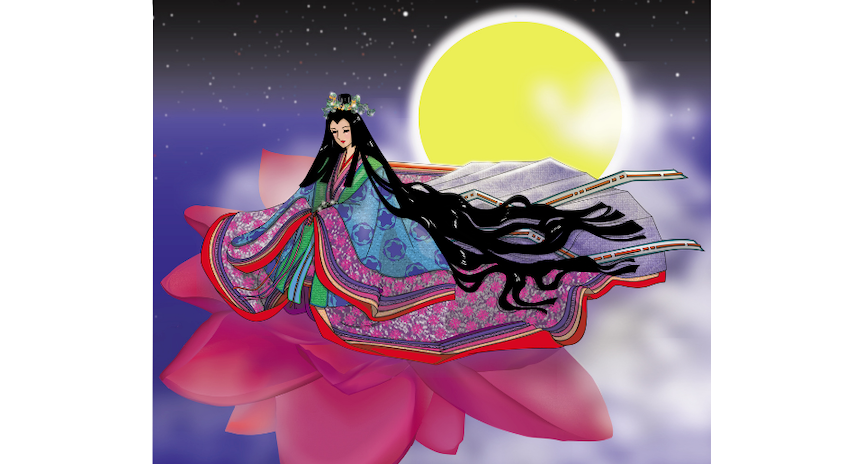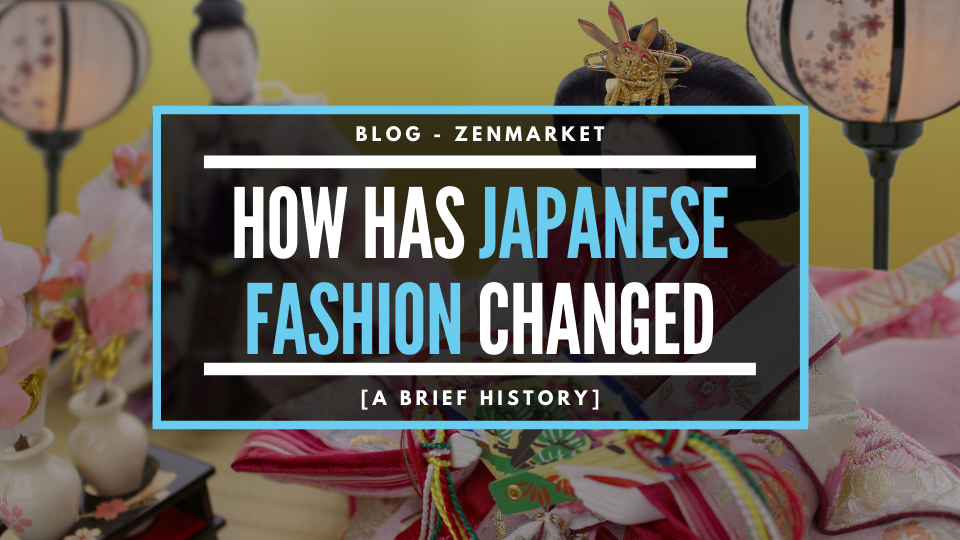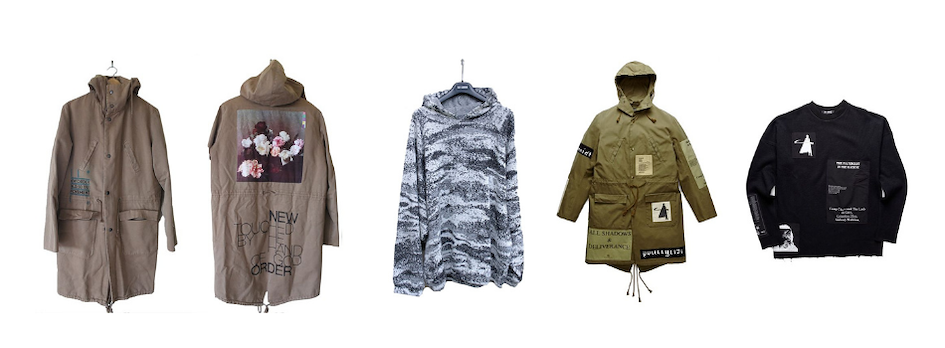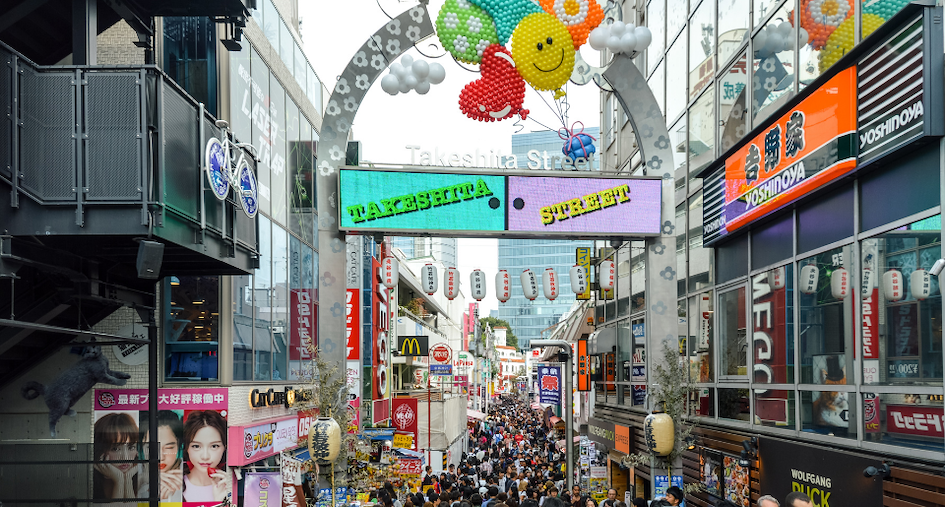[ad_1]
Japanese fashion has long been giving and taking regarding fashion influence. Fashion and clothing have changed throughout the centuries to become what we know now as Japanese fashion.
There are three main points in time within the evolution of Japanese fashion: The Heian period, Meiji Period, and the late 20th century. The Junihitoe, created during 794AD-1185, is the first generation of Kimonos. Since then fashion has taken many turns in Japan and influenced other countries.
From traditional clothing to Harajuku fashion, keep reading to learn how and why Japanese fashion has changed over the years.
History of Japanese Fashion
Japanese fashion has two significant components, traditional (wafuku) and western (yofuku).
In ancient times, the Japanese used animal skins and made them into clothes. Later on, Japan was influenced by other countries to dress in fabric-made clothing. Traditional Japanese fashion is a long history of traditional culture. The Heian Period, also known as the Golden Age of Japan, was a time of art. Regarding fashion during this time, the Tang Dynasty from China heavily influenced Japan. There was a significant import from China, and further development of Chinese art took place in Japan. Some aspects of the Tang Dynasty’s influence were the color pallets and silhouettes.
The garment that was invented during this time is called the Junihitoe. Junihitoe was the formal wear in the Heian court and only by ladies of the court. The Junihitoes were brightly colored in shades of reds, greens, and yellows. The Junihitoe at this time were layered heavily, on average 12 layers. At times it would have gone up to 40 layers. It was imperative to follow court fashion trends and be highly skilled in matching colors. Knowledge of the current fashion and color schemes was a more critical factor in deciding a person’s attractiveness than the beauty of the person wearing the Junihitoe.
Commoners wore Kosode, made from linen, and had cylindrical sleeves during this time, as it was practical. Later, the nobles would start to wear the Kosode as well.
By the Edo period, the Kosode became a unisex clothing stable. At the Kosode developed through time, it became popular to wear patterned and or embroidered Kosode. The Kosode has then evolved into what we now know as the modern Kimono.

What is Ryukyuan Bingata?
Ryukyuan Bingata is now known as a Traditional Okinawan dyed clot. Bin means red, and gata means pattern. There are also deep blue dyed fabrics called Eshigata. Ryukyuan Bingata appeared during the 14th to 15th century in the Ryukyu Islands, now known as the Okinawan Islands of Japan. They were influenced by Indian print as well as Chinese fabric. For some time, Ryukyuan Bingata fabric was worn by nobles.
Throughout history, there were many moments where Ryukyuan Bingata almost disappeared due to invasions and war. But now, Okinawa Bingata can be purchased in Okinawa in many different forms other than the Kimono.
This is thanks to the Ryukyuan people passing down their tradition from generation to generation.
Western Influence on Japanese Fashion
One of the most surprising changes in Japanese culture is the rise of WEstern fashion in the Meiji period (from 1868 to 1912). The Japanese have been borrowing and adapting traditions and styles from WEstern countries since the 1854 United States Trade Agreement. Since international trade began between Japan and the United States, Japan has been one of the primary sources of global fashion inspiration. However, Japanese fashion has experienced external influences as well.
By 1926, men’s fashion had become mainly ‘westernized.’ After that, Western clothing styles influenced women’s fashion. In the beginning, people only wore Western styles at work, but after that, also at home.
The Japanese fashion movement after World War 2 included a unique blend of contemporary and oriental culture. In this process, preserving Japan’s Wabi-Sabi philosophy (the art of Imperfection) has become crucial.
Japan’s uniqueness has influenced French culture the most. The French artists have even invented a word for that: ‘Japonism.’ ‘Japonism’ is a wide range of Japanese innovative techniques, aesthetics, and nature-based themes and motifs used by western designers today.
Japanese Influence on Fashion in Paris
Japanese designers started becoming prominent in the West, particularly in Paris. They are said to have created contemporary Japanese fashion and influenced many designers in the West. From 1970 to 1981, Kenzo, Issey Miyake, Hanae Mori, Yohji Yamamoto, and Rei Kawakubo of Comme des Garcons first appeared in the West. They have solidified their positions in fashion ever since. Fashion professionals praised them for their achievements thanks fr the ‘Japaneseness’ shown on their designs. Many people called it “The Japanese fashion” just because these clothing items were not western regarding silhouettes, construction, prints, shapes, and combinations of fabrics.
Out of these Japanese designers, the most famous 3 are Issey Miyake, Rei Kawakubo, and Yohji Yamamoto. Issey Miyake is one of the most significant contributors to Japan’s role in the global fashion scene for his mesmerizing pleats. Yohji Yamata is commonly known for his partnership with Adidas and his avant-garde tailoring. Rei Kawakubo revolutionized women’s fashion with her innovative masculine approach in the 1960s.
The source of their inspiration surely came from symbols of Japanese culture, such as Mount Fuji, Kabuki, cherry blossoms, and the Geisha. However, their brilliance lies in the ways they deconstruct existing fashion rules and reconstruct their idea of what fashion is. These Japanese designers first proved to Paris and then to the rest of the world that they were masters of design. They shocked the Western world by showing the fashion professionals something they hadn’t seen before.
The Japanese designers were the leading players in the redefinition of fashion and clothing. Some even believe that they destroyed the modern Western definition of fashion. They were given the privilege and status that only Western designers have had until then.
After the first generation of Japanese fashion designers, other designers moved to Paris one by one. The second, the third, and the fourth generations emerged in Paris. There were informal and formal connections among almost all the Japanese fashion designers in Paris. Through school or professional networks. They can be traced back indirectly or directly to Kenzo, Yamamoto, Kawakubo, Miyake, and Mori since they have learned about the fashion system in France.
Due to Japan’s fashion system structural weaknesses, Japanese designers had to mobilize in Paris, temporarily or permanently. In the early 2000s, Japan still fell behind Paris in fashion production, a reputation that is creating designers, setting trends, and spreading their names globally. This is why the designers were forced to come to Paris, where only the best and most ambitious can work and survive.
Modern Japanese Fashion
Harajuku Fashion
Harajuku, a Tokyo district, is the district that created and promoted thousands of different original street styles. Harajuku is also known as the capital of ‘Kawaii’ culture and has inspired many Japanese fashion designers, now popular both in Japan and abroad.
The 1990s were the golden age of cosplay culture and Harajuku street fashion styles. Those were times of exaggerated accessories and unbridled creativity that became famous worldwide. However, under pressure from fast-fashion chains, the Harajuku fashion scene seems to have tweaked in the last ten years.
Read more: IS DECORA FASHION ALIVE OR DEAD
Post Harajuku Fashion
But the Harajuku district has left something fantastic behind. Post-Harajuku fashion is filled with eclectic streetwear flavors, together with tailored designer pieces. Unexpected and unusual combinations can be found everywhere, from the stylish streets of Tokyo to the runway.
To Western audiences, Japanese fashion unveils a new world of fashion. Japanese street fashion remains a place for bold fashion full of layered kimonos, bold accessories, genderless ensembles, and pleated garments. Japanese street fashion designers can reconstruct and deconstruct our idea of fashion impeccably. It remains the country of those who invent contemporary staples, beautifully complemented by oriental hair and makeup.
No matter what the future holds, if history has taught us anything, Japanese designers somehow always create something new or the world of fashion.
[ad_2]
Source link



